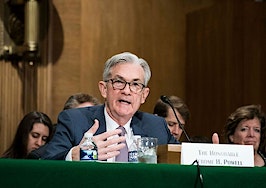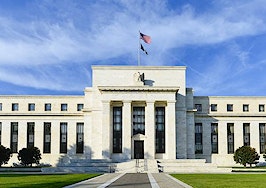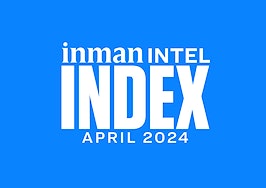I read about inflation in school during the late 1970s — what it does to countries that don’t manage to restrain “too much money chasing too few goods.”
We learned about the massive inflation and currency devaluation in Europe, specifically Germany, preceding World War II. And about inflation in South American and African countries forcing people to bring wheelbarrows of cash to the store for basic staples.
Then in the late 1970s, it hit the United States. Not the wheelbarrows-of-cash sort of inflation, but unprecedented levels of both inflation and shortages.
What it was like
I was beyond excited as I queued up to take my driver’s test at the end of 1978. I’d skipped first period to get to the DMV by 8 a.m. (My son did much the same thing 48 years later.) I drove off in my hand-me-down, baby blue Dodge Demon and made it to school before lunch.
One hallmark of the Demon was that the gas gauge had a quarter tank left when it registered empty, which meant I frequently ran out of gas. Rather than being proactive and filling up early, I’d guess at how many miles I’d driven since it hit empty.
The next year, still a new driver with a faulty gas gauge, the 1979 Oil Shock hit, shocking everyone with a car. Lines at gas stations extended for blocks. Gas attendants had signs saying, “Last Car,” which they’d hang on one random car’s back bumper. Everyone behind that car had to find another station or wait another day (I look back and wonder how they knew exactly how many cars they could still fill and figure it was a “guesstimate.”)
One day, knowing I’d pushed my car to the brink of running out, I got in a particularly long queue. After about 20 minutes, an attendant walked out and hung the “Last Car” sign on the bumper of the car just in front of me.
I hopped out and pleaded, “I’m going to run out if I drive any further!” He was unmoved, so I moved on. I can’t remember if that was one of the days I ran out of gas, but I recall I didn’t, so perhaps my father had some at home or I found another line to sit in.
Inflation in 2021
Ever since those days of runaway inflation and shortages, we periodically hear scary inflation predictions. Interest rates skyrocketed in the early ’80s. The peak mortgage rate was 18.45 percent in 1981, the year I graduated from high school and our company, Kentwood Real Estate, was founded.
After the Great Recession and the Federal Reserve’s Quantitative Easing policy (remember that one?) warnings of catastrophic inflation began to ring out again. Those warnings are back with pandemic relief and easy-money Fed policies.
Our economy is awash in liquidity, and there’s too much money chasing too few goods. We’ve particularly seen this in the housing markets over the past 12 months.
I’m no economist, but I do recall from my university studies that there are two types of inflation. Base-effect inflation is what we observe today in a year-over-year calculation. This has resulted from prices cratering last year at the onset of the pandemic.
One would expect prices to be higher a year on, with pandemic recovery on the horizon here in the U.S. Experts expect base effect inflation to be moderating as we move through this year. Year-over-year calculations should settle back to a more realistic measurement of where inflation actually stands.
The second type of inflation has been impacting housing markets, furniture manufacturers and automakers. Bottleneck inflation results when there are supply bottlenecks or shortages of goods, like the lumber shortage creating headaches for new home builders and furniture manufacturers and the chip shortages affecting car manufacturers. The 1979 Oil Shock resulted from a supply bottleneck due to the Iran-Iraq war.
As supplies increase, bottleneck inflation will hopefully settle. I was recently shopping for furniture, and the saleswoman noted that foam and lumber shortages are moderating, and their furniture delivery timelines are gradually returning to normal.
Homebuilders are still struggling to keep up with housing demand, and as a result, many have been raising prices and ceasing to take new contracts until they can catch up with demand.
In late June, lumber prices were finally easing. Economists at Fannie Mae think home price appreciation peaked during the second quarter of this year, and will gradually decelerate over the next 18 months. But they expect home price growth to become “one of the more persistent drivers of inflation going forward, as other, more transitory factors diminish.”
Colorado housing trends and U.S. housing markets have seen demand far outstripping supply. High demand for available goods results in rising prices, also known as a “seller’s market.”
In 1981, real estate brokers were able to sell homes even with 18 percent interest rates, but we do not want a reprise of those times. I’ve learned, while casually watching economies and closely watching the housing market, that over time, things cycle.
The key question many economy-watchers are asking is whether inflation will be moderate or rampant. There are arguments on both sides, made by very educated people. Some of the answer lies in human behavior.
The Fed is watching intently for inflation indicators, and we would all do well to pay attention, too. If the economic recovery drives inflation higher, they should step in and act to tamp down the possibility that we spiral toward untenable price and rate increases.
Rising mortgage rates will slow home sales in some markets and price increases may ease, but buyer demand remains strong and should continue to drive housing sales. Affordability has been an issue for years. Home prices need to moderate and available housing increase to create an opportunity for first-time buyers.
The bottom line?
If mortgage rates go up, if supply increases, or if demand moderates, prices will reflect the new dynamic. One thing I believe is that housing prices will not crater in this environment. It took a Great Recession to witness a decline in home prices over the past 40 years, and even then, it wasn’t uniform across all markets or even neighborhoods.
Many homeowners were upside down in 2008 because of 100 percent financing for “fog a mirror” buyers. Today, home price inflation and stricter lending policies have created more housing wealth and equity than ever before.
In most markets, home price appreciation will likely settle back down under 10 percent, possibly closer to 5-6 percent, when rates go up or demand moderates, but housing should keep up with, or beat, inflation.
Stay informed. Inflation can have a deep and lasting impact on housing and the larger economy. Let’s hope it truly is transitory.
Gretchen Rosenberg is the president and CEO of Kentwood Real Estate in Denver, Colorado. Follow her on LinkedIn and Twitter.












